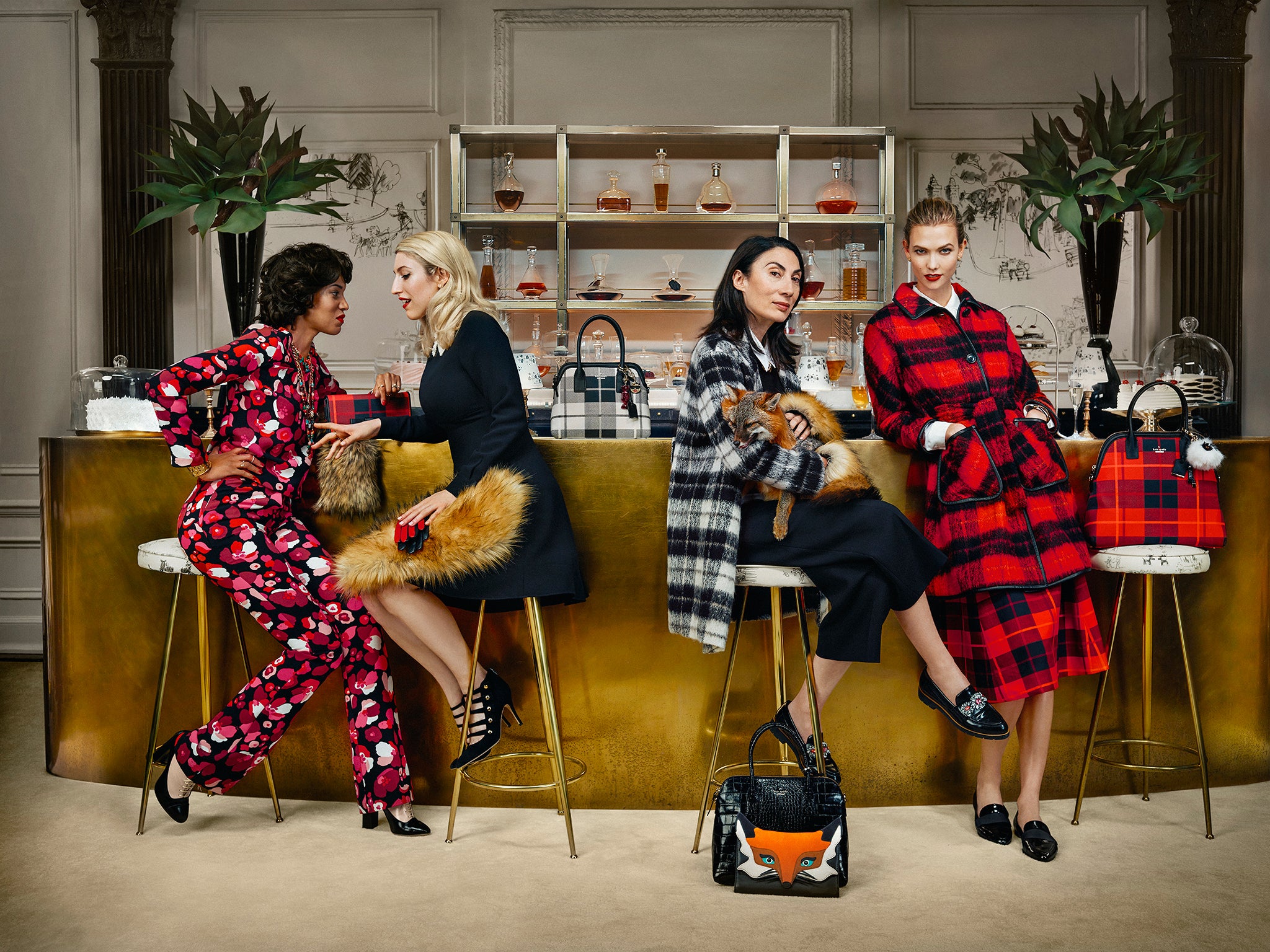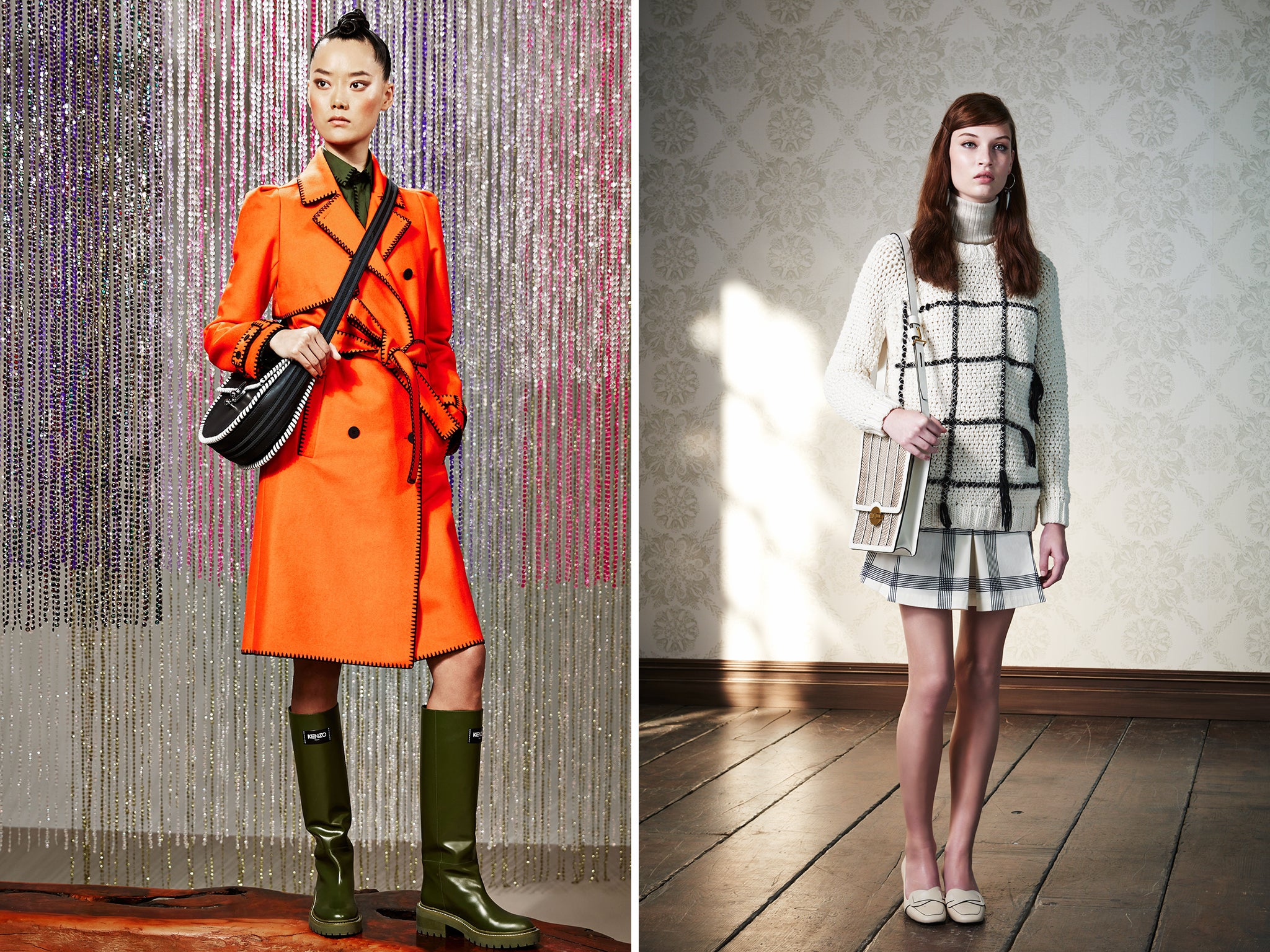Accessible luxury: Brands may be devaluing 'luxury' – but they’re making a mint
The oxymoron of 'affordable' luxury is the fashion phenomenon of our time

Accessible luxury. It’s an oxymoron, sure – but it’s an oxymoron that has launched a thousand ships. A thousand ships, filled with ten million handbags, that have netted the designer brands embossed across their surfaces – Kate Spade, Michael Kors, Tory Burch – billions.
That oxymoron is the fashion phenomenon of our time.
Do you need convincing? How about the fact that in June, Rachel Mansur and Floriana Gavriel scooped a Council of Fashion Designers of America (CFDA) award for emerging accessories designers? Although no bag in their Mansur Gavriel line is priced higher than three-figures, you probably can’t buy them: key styles, such as a drawstring leather bag with poppy contrast lining (£485), are perpetually sold out. Clothing is next for Mansur Gavriel. It sounds like the start of an empire – to rival, perhaps, that of Tory Burch, who won a CFDA for her accessible accessories in 2008.
What does accessible luxury mean, for those unschooled in fashion’s unique, often meaningless, verbiage? It’s occasionally dubbed, more transparently, “affordable” luxury. It’s about an egalitarian approach, of brands aiming not high, but wide, at a broad swathe of middle-class consumers eager to snap up status symbols, provided the price is right.
“Accessible luxury is about making exceptional fashion available to a wider range of shoppers,” says Mary Beech, executive vice president and chief marketing officer of New York’s Kate Spade & Company, via a carefully measured email. She’s right, and she’s wrong. These clothes are widely available, but they’re not especially exceptional: they’re simple designs in decent materials with a cachet-laden name attractively attached. They are accessible economically and aesthetically. They’re not breaking new stylistic ground.

But Beech doesn’t talk about design. Because these brands aren’t really about that. They’re about innovative pricing architecture, new ways to entice customers, sating mass demand for luxury. “It is really about balance – this approach enables us to reach a broader consumer base while staying true to who we are.”
The approach also enabled Kate Spade to pass the all-important $1bn (£640m) turnover threshold in 2014. Accessible luxury brands talk about turnover in billions, not millions. Tory Burch and Michael Kors are both personal billionaires (the only other in American fashion is Ralph Lauren).
Kors fought through bankruptcy in the Nineties; Burch was, back then, just another a well-heeled Manhattanite working in fashion PR. Maybe she had dreams of her own brand? Maybe not. She only founded it in 2004; a decade later, it was worth £1.92bn. Meanwhile, the Michael Kors brand is now worth £12.8bn. That’s £12.8bn built not on Michael Kors’ mainline – with its £6,000 leather coats or £2,000 sundresses in fil coupé organza – but on accessible stuff, like a £230 watch, or a £315 bag, called the Selma, that’s so ubiquitous I’ve stopped counting how often I’ve seen it.
This kind of stuff sounds simple, like a high- fashion get-rich-quick scheme: affix a logo and name to a relatively simple bag, price it at under a grand, and watch the dough roll in. But it often goes wrong. There have been a few blips even at behemoths like Kors and Spade. (Share values in the latter have dropped 35 per cent since the start of 2015; Kors’ profits are down for the second quarter in a row.) But their troubles pale next to British brand Mulberry, whose value hit a high of £1.5bn in 2012, but had 75 per cent wiped off over the next three years as the brand sought – unsuccessfully – to move into higher levels of luxury. Mulberry backtracked: last year, 46 per cent of its handbags cost under £1,000; now it’s closer to 70 per cent, and profits are rising again.
Other labels have similarly repositioned, and have reaped the rewards. For instance, the Paris based, LVMH-owned label Kenzo installed Humberto Leon and Carol Lim – founders of the successful Opening Ceremony retail chain – as creative directors in 2011 as part of an overall overhaul. Under their watch, Kenzo has evolved into something younger in feel and customer, and lighter in price.
“When Kenzo Takada founded the brand he dreamt of creating collections accessible to the street, and that idea of accessibility for consumers was something we were determined to bring back,” comment Leon and Lim. “There’s a real diversity in our price points – there are pieces in the collection for £30 and there are pieces for £3,000, but that £3,000 item looks like it’s worth it.” The offering, however, is weighted towards the former: walk into Kenzo’s refurbished store on London’s Bruton Street and merchandise costs hundreds, not thousands: signature sweatshirts cost £175; a Kalifornia clutch just £210.
Designers have offered alluring ranges of cut-price merch before, of course: in the 1980s and 1990s, the watchword was “diffusion” – lines that offered less intense (diffuse, geddit?) versions of catwalk styles. Accessible luxury labels, however, are the big kahuna. You’re not buying into a pinchbeck version of Tory Burch when you purchase a pair of £220 Reva flats with her cruciform double-T logo glistening on the toe (still the brand’s top-selling product in Selfridges). They’re the real deal, just like Kate Spade and Kenzo.
Michael Kors is an anomaly, in that he still has a higher-priced line, and his accessible range is called Michael Michael Kors (and you only get the all-important latter two names on his £300-ish Selma, Ava and Cindy totes). But apparently, rather than cheapening his name, the tactic acts as a form of promotion. Selfridges have a newly opened mainline Kors boutique, saying that the accessible line has driven awareness – and demand – among luxury customers.
So, this all sounds very accessible. But is it really luxury? That’s the tricky question, when it’s obvious that certain corners are cut to ensure a bag retails at that all-important under-£1,000 price mark: materials may be slightly cheaper (a Tory Burch twill coat mixes polyester and acrylic with wool; a Kors jumper is equal parts mohair and nylon). Still, that issue is bypassed with utilitarian fabrics such as denim or cotton – so Kenzo has a range of “Kanvas” bags, for instance.
“It’s about hard-working easy-to-wear pieces that still have an incredibly luxe feel,” says Natalie Kingham, the buying director of MatchesFashion.com – which stocks accessibly priced ranges including Kenzo and Mansur Gavriel. She remarks that designers as varied as Marni, Valentino and Gucci have begun to offer pieces with similarly accessible (or maybe that should be competitive) prices. Their simpler handbags and denim-based separates offer “a strong fashion look and design in luxurious-feeling fabrics at more accessible price points,” she says – and it could be Tory Burch herself talking, in 2008. “I wanted to start a company that was a designer luxury brand that was accessible,” she said. “I love fashion. I love designer clothing, but I was tired of spending.” Spending too much, that is.
However, maybe it’s not about cost, or aspiration. These accessible brands are offering something new; at least, that’s an opinion one fashion buyer touted to me, after visiting an Asian outpost of her store where brands like Kors, Burch and Spade were dubbed “the new luxury”. They’re new, as they don’t have the heritage of an Hermès or Vuitton, but their approach is also new. Perhaps “accessible” isn’t the important term. Perhaps it’s the overused word “luxury” that needs a re-think. “Luxury to us is to be able to look at a runway show and say, ‘I can buy that’,” say Humberto Leon and Carol Lim of Kenzo. Maybe that’s new luxury, for the 21st century.
Join our commenting forum
Join thought-provoking conversations, follow other Independent readers and see their replies
0Comments